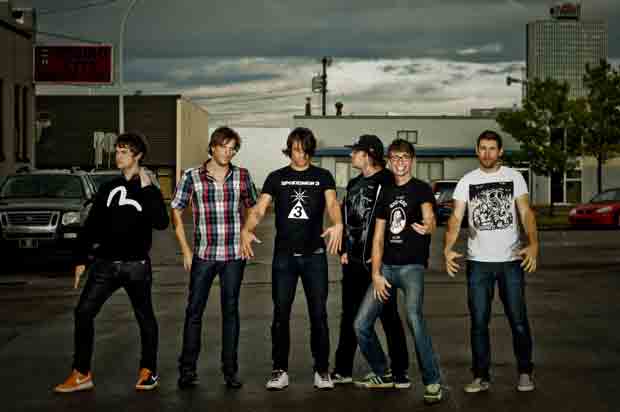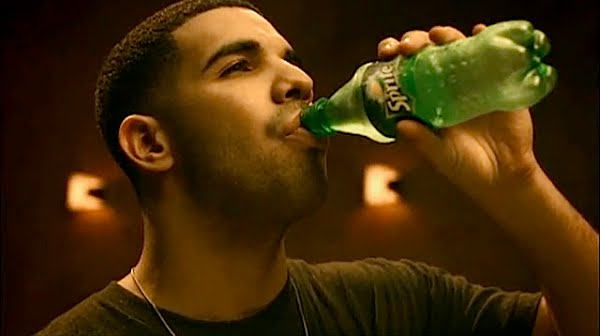Shout Out Out Out Out (and more than a few other things)
By Jim DeRogatis

Shout Out Out Out Out (and more than a few other things)
By Jim DeRogatisAUSTIN, Tx—Commitments and reality beckon, and as you read this, my last dispatch from my 20th trip to South by Southwest, I’ll be trading bright sun and 85° for rain and a high of 35… to say nothing of no longer hearing two dozen bands a day. But, hey, Spring Break can’t last forever.

Best things first: My musical highlight Friday, and the second best show I saw after Savages throughout the festival, came courtesy of a six-piece band from Edmonton, Alberta, Canada, with the unwieldy name of Shout Out Out Out Out. (Read it as if those last three “Out’s” are slap-back echoes.) If I have a problem with a lot of electronic dance music today, it’s that it’s ahistorical: EDM should not be slavishly tied to the past, but often things hailed as groundbreaking were done 30 years ago, and ideas hinted at then but never fully explored still offer more adventurous new sonic worlds than the ubiquitous unsa-unsa crap.
With an endearing love for the rich analog sounds of vintage Moog synthesizers and the tremendous visceral power of not one but two great live drummers, plus an obvious devotion to cutting-edge rhythms and digital technology, Shout Out Out Out Out has been creating a bridge between Krautrock (heavy on the Hawkwind, Neu! and Kraftwerk) and next week’s hippest grooves over the course of three albums since 2006, including last year’s Spanish Moss and Total Loss. And the power of this very human manipulation of machines and technology in the sweaty, loud and immediate present is absolutely undeniable onstage.
Shout Out Out Out Out’s afternoon set at the International Day Stage in the Austin Convention Center came after a panel called “Inside the Artist’s Studio” where Hits magazine president Karen Glauber channeled James Lipton and coaxed an array of artists to talk about the creative process in their songwriting, from lyrics they avoid and problems that have taken them months or years to work out, to those wonderful bursts of inspiration where a timeless tune comes fully formed in five minutes.
The highlights were acoustic performances (and the ensuing stories behind the songs) of “Black Like Me” by Britt Daniel of Spoon, a new tune that may or may not wind up being called “I Hate Music” by Mac McCaughan of Superchunk and “Something Came Over Me” by Chris Stamey of the dB’s and the fine new solo album, Lovesick Blues. These bursts of musical brilliance were very much needed to reaffirm my faith in the power of art to transcend commerce after the panels I attended earlier in the day.
“Building an Optimal Partnership Between Brands & Bands” was another of the six sessions in the last few days touting the idea that corporate America and the advertising world are, in effect, the new and better music industry. This one had an executive from Coca-Cola on it—“Music is a tremendous passion point for fans,” he said, noting its ideal role in helping sell caffeinated sugar water—and it was distinguished from the panel entitled “The Future of Cultural Branding” only by the fact that that discussion was sponsored by Pepsi.
In the panelists’ view, the world works like this: Drake likes Sprite; Sprite likes kids; kids like Drake. Sprite gives Drake money to help sell Sprite. Everyone wins! Except, of course, the kids who should be drinking fruit juice or water.

One of my favorite careful-what-you-wish-for stories came from Brad Haugen, chief marketing officer of Scooter Braun Projects, also known as Justin Bieber’s managers. Before the Biebs became a star four years ago, he was using Proactiv to clear up his skin, Haugen said. The managers called the company and tried to get a sponsorship deal, but the company wasn’t interested. Then Bieber blew up big with the release of My World 2.0. Proactiv came begging and Biebs cleaned up with a lucrative sponsorship… which he cancelled a year later when he grew embarrassed that everyone thought he had acne.
Alas, one can never escape the decision to optimize that allegedly ideal brand/band partnership. Maybe that’s why young Justin’s been so troubled of late.
Apparently, poking fun at the Biebs or in any way questioning his validity as an artist, to say nothing of maintaining a belief in the evils of “selling out,” marks this critic as an elitist snob: If one wasn’t listening carefully, one would think that was the message of the discussion called “Guiltless Pleasures: Imagining a Post-Snob World.” But while chatting after the session, twenty-something participants David Greenwald of Rawkblog and Billboard and Simon Vozick-Levinson of Rolling Stone (who had been joined by Lindsay Zoladz of Cannonball and Pitchfork via Skype) pretty much agreed that my definition of criticism is the same as theirs: an attempt to intellectually convey your emotional response to a work of art.
The good critic would never tell someone, be it the 11-year-old Belieber or the 70-year-old Rolling Stones fan, not to listen to something said critic dislikes; he or she is just giving their emotional reaction to that music, with all of the context, insights and evidence they can muster to get the discussion started. (For the record: This critic isn’t big on Bieber, thinks the Rolling Stones were pretty great up through Some Girls in 1978, but would be hard-pressed to say which he would dislike more if imprisoned at Guantanamo and forced to choose between listening only to post-’80 Stones or present-day Biebs.)
In their zeal to laud the “pop omnivore” who’ll listen with equal diligence and write with just as much insight about underground or mainstream acts, “Gangnam Style” or Amok by Atoms for Peace (to use the examples Dave Grohl cited in his keynote), these sixth-generation rock critics could be strident at times with their doctrinaire declarations, especially about the “false god of authenticity.” Yes, authenticity is a phony construct. But who among us really can deny that Thom Yorke has more of something very important than Psy? (I’d call it “soul.”)

Still, it was great to hear these issues being wrestled with. Even better was hearing Zoladz end the session by pondering whether bragging of omnivorous listening is in fact the new snobbery. (One used to jockey for hip points by claiming one was first to hear Hüsker Dü play for six people at a small club in the ’80s; now it’s bragging that you really, really like Ke$ha as much as Grimes.) But best of all was hearing the panelists agree with both me and Grohl that Pitchfork is not only often too narrow in what it chooses to review and what it ignores, but that the influential and formerly Chicago-based Webzine is just no darn good as a model for what music criticism should aspire to be. (Plus, editors there are unfamiliar with one of the most basic rules of grammar—the punctuation goes inside the quotation marks. Learn it!)
But enough inside-baseball on the dirty business of rock criticism: Let’s wrap up with some final lightning-round observations of other musicians whose paths I crossed in Texas, delivered concisely but (to be certain) absolutely non-snobbishly.
Parquet Courts: I wanted to see if these Brooklyn slackers possibly could be as good onstage as they are on Light Up Gold. Were they? Fuggadeaboutit! (That is to say, “Absolutely, yes!”)
Merchandise: I prefer my shoegaze with less gloom and no Brooklyn grooves (though these lads actually hail from Tampa).
Mikal Cronin: He’s toured with Ty Segall’s band, but his own music is a lot more melodic, less ferocious… and not nearly as engaging live.
Dawes: Perfectly pleasant, sunny West Coast jangle. Wake me when it’s over.
My complete coverage of SXSW 2013
More of SXSW Day Two: Social networking and the music of Pumcayo
Foo fighting: Dave Grohl’s keynote address
Laura Stevenson, Holydrug Couple, Foxygen and more
Imaging, jingle-crafting, crowdfunding and ‘Born in Chicago’


